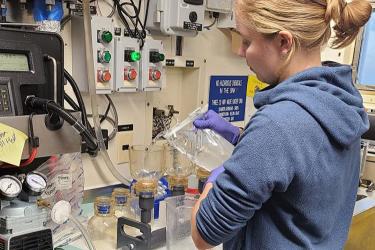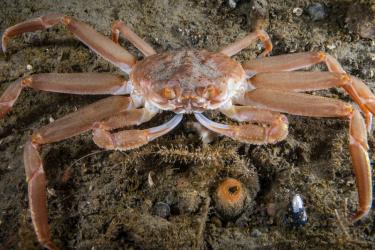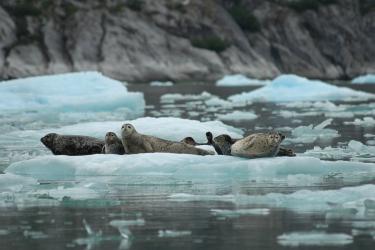A Changing Climate
Changing climate and oceans are affecting the nation’s valuable marine life and the many people, businesses, and communities that depend on them. Warming oceans, loss of sea ice, rising seas, extreme events, and acidification are impacting the distribution and abundance of species and the structure of marine and coastal ecosystems in many regions. These impacts are expected to increase and there is much at risk.
Expected Changes in the U.S. Gulf of Alaska
As with many other parts of the world, climate change is expected to drive relatively large changes in climate and ocean conditions are expected in the U.S. Gulf of Alaska. While ocean physical and chemical changes are clear and quantifiable, ecosystem responses are more uncertain because there are multiple interacting factors. Research is needed to assess climate-driven changes to critical ecosystem components, evaluate potential effects on marine species, and determine which populations, fisheries, and communities are most at risk. The Alaska Fisheries Science Center provides scientific data, analysis, and technical advice to support appropriate responses to changes in the ecosystem. This advice is shared with constituents including:
- North Pacific Fisheries Management Council
- NOAA Fisheries Regional Office
- State of Alaska
- Alaska coastal communities
- Fishing industry
This Gulf of Alaska Regional Action Plan highlights ongoing and planned research by the center and partners to continue to implement the National Climate Science Strategy and other priorities through 2024.
Priority Actions
This plan identifies priority actions to implement the National Climate Science Strategy and advance climate-informed decision making, resilience and adaptation in the region.
Informing Management (Objectives 1–3)
- Conduct climate vulnerability analysis for the Gulf of Alaska
- Develop Ecosystem and Socioeconomic Profiles.
- Advance the Gulf of Alaska Climate Integrated Modeling project
- Develop a communications and engagement strategy to support co-producing science with Gulf of Alaska communities
- Facilitate bi-directional knowledge exchange
Understanding Mechanisms and Projecting Future Conditions (Objectives 4 and 5)
- Study the thermal effects on age-0 Pacific cod
- Conduct experimental studies on temperature and ocean acidification
- Examine changes in zooplankton size due to warming
- Evaluate heatwave impacts on Steller sea lions
- Study the impact of environmental variation on Cook Inlet beluga whales
- Develop a coupled fleet-community-adaptation model
- Develop a bio-economic model of Pacific cod in the Gulf of Alaska
Develop decision support tools for ocean acidification
Infrastructure and Tracking Change ( Objectives 6 and 7)
- Maintain a full suite of surveys in the Gulf of Alaska
- Expand the scope of monitoring
- Develop rapid assessment methodologies
- Establish additional survey-derived indicators
- Update harbor seal abundance estimates
Contacts:
- Rob Suryan (rob.suryan@noaa.gov)
- Lauren Rogers (lauren.rogers@noaa.gov)
- Paul Spencer (paul.spencer@noaa.gov)



